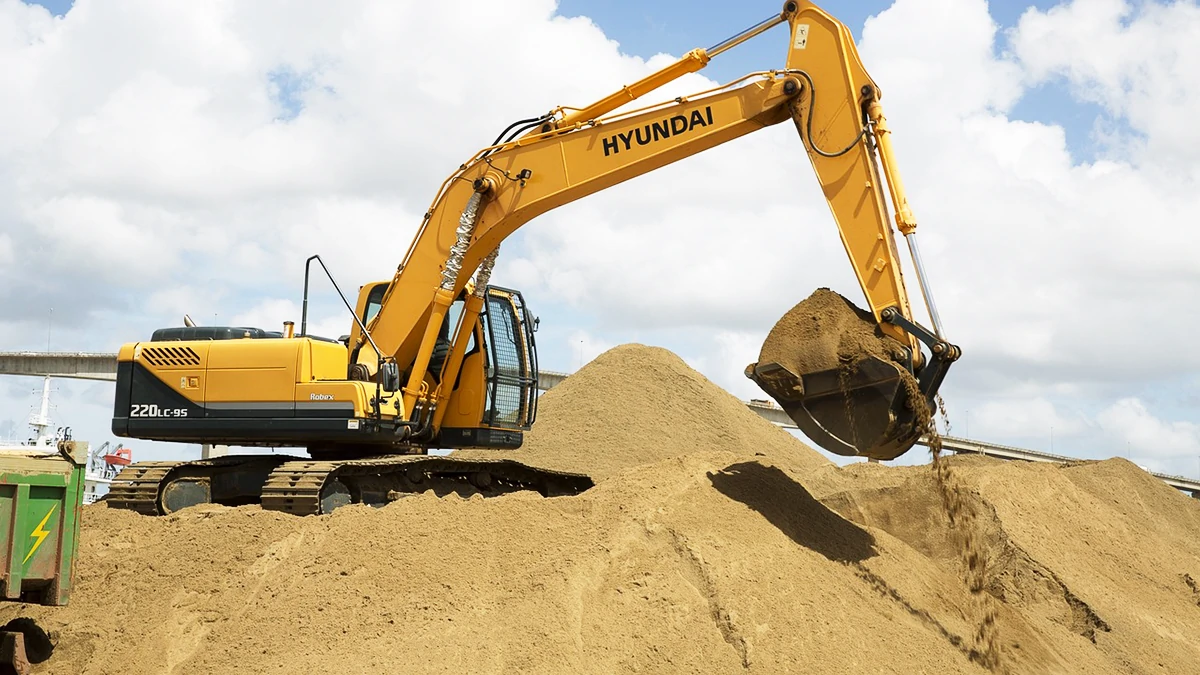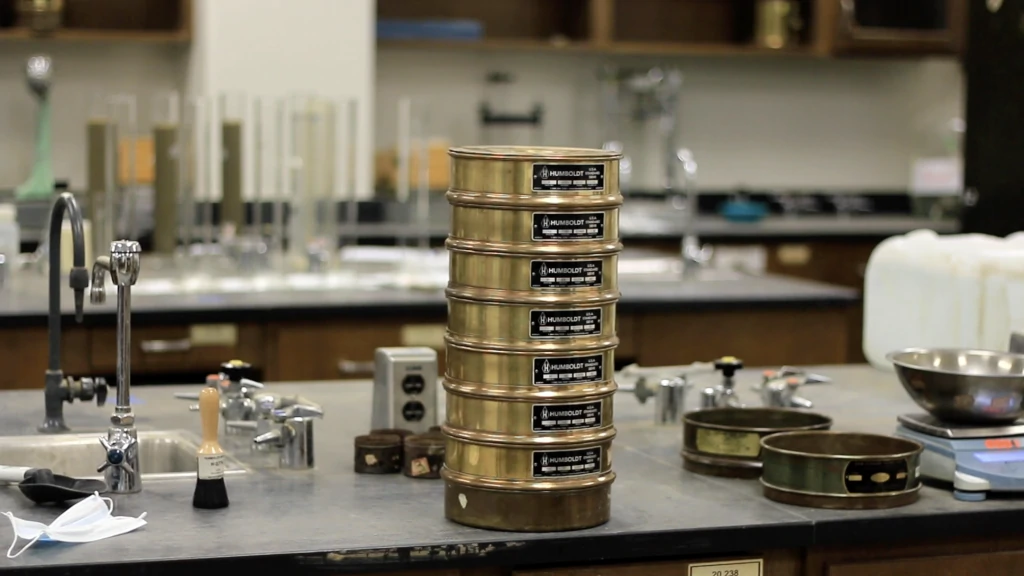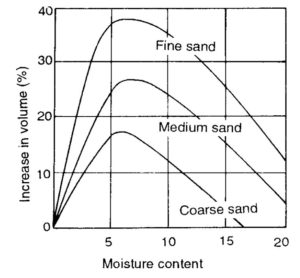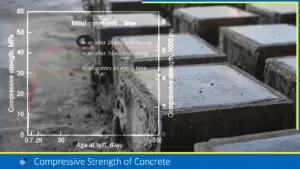Fine aggregate commonly known as sand is an inert material widely used for construction works. From concrete production to mortar, asphalt, and even the creation of glass and bricks, sand’s unique properties make it an indispensable component of modern construction. This article explores the significance of fine aggregate in construction, its various applications, the importance of proper grading, sustainable sourcing practices, and potential challenges in managing this finite resource.
What is Fine Aggregate?
Fine aggregate, one of the primary constituents of concrete along with cement, water, and coarse aggregates, is a term used to describe small, inert materials, whether granular or crushed stone. These fine aggregates are essential components in concrete mixtures and play a crucial role in determining the properties of the resulting concrete.
Typically composed of small particles with diameters ranging from 0.075 millimetres (mm) to 4.75 mm, fine aggregate is a granular material of quartz. These particles are smaller than those of coarse aggregate, which is another integral component of concrete. The proper selection and grading of fine aggregate are vital factors in achieving the desired workability, strength, and durability of the concrete mix.
What is Sand?
Sand is a naturally occurring material which is commonly used as fine aggregate in the production of mortar and concrete (both cement concrete and asphalt concrete). A sand is a granular material composed of finely divided mineral and rock particles. Sand can be sourced from pits, rivers, lakes, or seashores. When acquired from pits, it is necessary to wash it to eliminate clay and silt. Seashore sand may contain chlorides, leading to efflorescence and potential corrosion of reinforcement, making thorough washing imperative before use. Likewise, if river sand contains impurities like mud, it should be washed before incorporating it into construction materials as fine aggregate.

Also, read: What Is Cement Concrete? | Why Should You Know About It?
Fine Aggregate Size
Fine aggregate size refers to the particle size distribution of the small, inert materials used in concrete. The typical size range for fine aggregate is defined by the ASTM C33 standard, which sets the limits for the different sieve sizes used in the sieve analysis of fine aggregates. The standard ASTM C33 specifies that fine aggregate should pass through a sieve with openings of 9.5 mm (3/8 inch) and be retained on a sieve with openings of 75 μm (No. 200).
In general, fine aggregates include particles that are smaller than 4.75 mm (No. 4 sieve). The specific size distribution within this range can vary, and it is often characterized by terms such as “coarse sand,” “medium sand,” or “fine sand,” depending on the proportions of different particle sizes.
Classification Of Fine Aggregate:
Fine aggregates can be classified based on their origin, particle size and particle size distribution as discussed below.
On The Basis of Origin:
According to a different origin, fine aggregate natural sand can be divided into river sand, sea sand, mountain sand and desalted sea sand.
- Natural Sand:
- River Sand: Extracted from riverbeds, river sand is a common natural fine aggregate. It is often well-rounded and has a variety of particle sizes. However, indiscriminate sand mining from rivers can lead to environmental concerns and ecological imbalances.
- Sea Sand: Derived from seashores, sea sand may contain salt and other impurities. It requires thorough washing before use in concrete due to the potential presence of chlorides, which can lead to durability issues and corrosion of reinforcement.

- Manufactured Sand:
- Crushed Stone Sand/Artificial Sand: Produced by crushing hard stones or rocks, manufactured sand is designed to meet specific grading and particle shape requirements. It is often used as an alternative to natural sand, especially in regions where natural sand sources are scarce or depleted.
- Crusher Dust/Quarry Dust: Byproducts of the crushing process in quarries, crusher dust or quarry dust can also be used as a fine aggregate. These materials are finely graded and can contribute to improving the workability of concrete.
On The Basis of Particle Size:
Depending upon the particle size, fine aggregates are described as fine, medium and coarse sands.
- Fine Sand
Fine sand is characterized by its relatively small particle size. Fine sand typically falls within the range of 0.075 to 2 millimetres. It is often sourced from natural deposits such as riverbeds or seashores. The smooth, rounded particles of fine sand contribute to the workability of concrete mixes, enhancing the ease with which the material can be mixed, placed, and finished.
- Medium Sand
Medium sand falls within the particle size range of approximately 0.3 to 0.6 millimetres. With particles larger than fine sand but smaller than coarse sand, medium sand strikes a balance in terms of particle size distribution. Sourced from various natural deposits, it exhibits a moderate coarseness that contributes to both workability and structural integrity in concrete mixes. The particles, though not as fine as in fine sand, maintain a smooth texture, promoting good cohesion and flow during the mixing and placement of concrete.
- Coarse Sand
Coarse sand is characterized by its larger particle size ranging from approximately 2 to 4.75 millimetres. This type of sand is sourced from natural deposits like riverbeds or quarries, coarse sand exhibits a more significant grain size compared to fine and medium sands. Its robust particles contribute to the overall stability and strength of concrete mixes. While less smooth than finer sands, the coarseness of these particles enhances the concrete’s resistance to segregation and improves its structural integrity. Coarse sand is often used in concrete for its ability to provide bulk and fill voids between larger aggregates, ensuring a robust and well-compacted composition.
| Type | Grain Size |
|---|---|
| Fine Sand | 0.075 – 2 millimetre |
| Medium Sand | 0.3 – 0.6 millimetre |
| Coarse Sand | 2 – 4.75 millimetre |
Also, read: 12 Properties Of Good Building Stone: Comprehensive Guide
On The Basis of Particle Size Distribution:
On the basis of particle size distribution, the fine aggregates are classed into four zones; the grading zones being progressively finer from grading zone I to grading zone IV (IS: 383).
Properties and Characteristics of Fine Aggregate
Shape and Texture:
The shape and surface texture of fine aggregate affects its void ratio and water requirement in concrete mixes. The geometric characteristics of particles, whether rounded or angular, directly impact the void spaces between them. Rounded particles tend to result in a lower void ratio, enhancing particle packing and reducing overall porosity, while angular particles may contribute to a higher void ratio. Additionally, the surface texture affects the water requirement, with smooth particles typically demanding less water for mixing compared to rough or angular ones.
Specific Gravity of Fine Aggregate:
For fine aggregate, the specific gravity is typically determined in accordance with ASTM C128 or other relevant standards. The specific gravity of fine aggregate usually falls in the range of 2.5 to 2.8. This range can vary depending on the type of aggregate.
The formula for calculating the specific gravity \(( G_f \)) of fine aggregate is:
$$ Specific\;Gravity\;(G_f)=\frac{Weight\;of\;Oven\;dried\;sample}{Weight\;of\;equivalent\;volume\;of\;water} $$
Bulking Density:
The phenomenon of bulking in fine aggregate refers to the increase in volume observed when a given mass of the aggregate is exposed to water. This expansion occurs as water forms a film over the fine aggregate particles, exerting surface tension forces that push the particles apart, thereby increasing the overall volume. The degree of bulking is influenced by both the moisture content in the sand and its fineness.
Typically ranging from 15-30 per cent with ordinary sand, bulking increases with moisture content until it reaches a peak (usually around 4-6%). Beyond this point, the film of water on the sand’s surface breaks, and the bulking starts to decrease. Figure 6.2 illustrates the relationship between bulking and moisture content. In concrete mix preparation, neglecting to account for bulking when measuring sand by volume can lead to an overestimation of the actual volume, resulting in a richer mix and subsequently less concrete produced per bag of cement.
Bulking:
The increase in the volume of a given mass of fine aggregate caused by the presence of water is known as bulking. The water forms a film over the fine aggregate particles, exerts the force of surface tension and pushes them apart increasing the volume. The extent of bulking depends upon the percentage of moisture present in the sand and its fineness. The ordinary sand bulking varies from 15-30 per cent. It increases with moisture content up to a certain point (4-6%), reaches the maximum, the film of water on the sand surface breaks, and then it starts decreasing.
The determination of sand bulking can be carried out in the field by taking the following steps:
- Fill a container with a known volume \(( A \)) with damp sand, replicating how the mixer hopper will be loaded.
- Measure the height of the sand within the container.
- Carefully remove the sand from the container, ensuring that no sand is lost during this process.
- You can then proceed in one of two ways:
a. Dry the sand and fill it back into the gauge box.
b. Fill the container with water and pour the damp sand into it to displace the water. - Whichever method you choose, the new depth of the aggregate within the container will provide the unbulked volume \(( B \)).
Then percentage bulking is expressed as a percentage of the dry volume
$$ \frac{A-B}B\times\;100 $$
Grading Of Fine Aggregate
The grading of fine aggregate is nearly as critical as its quality. Grading of aggregate refers to the distribution of particle sizes within the aggregate. It is an essential aspect of concrete mix design and plays a significant role in determining the workability, strength, and durability of the resulting concrete. Fine aggregate particles range in size from smaller than 75 micrometres (referred to as silt) to 4.75 millimetres.
The grading of fine aggregate is typically expressed in terms of the percentage of weight retained on each of a series of sieves of standard sizes. The most commonly used grading system is based on the cumulative percentage retained on sieves ranging from coarse to fine. The grading curve, often called the gradation curve, is a graphical representation of this distribution.


Fineness Modulus:
The fineness modulus (F.M.) is a numerical measure of fineness that provides an indication of the average particle size within aggregates. For fine aggregates, the fineness modulus typically falls within the range of 2.0 to 3.5.
The object of finding F.M. is to grade the given aggregate for the required strength and workability of concrete mix with minimum cement. The higher F.M. aggregate results in harsh concrete mixes and lower F.M. results in uneconomical concrete mixes.
FAQs:
Q: What is the content of aggregate in the body of concrete volume?
Answer: Aggregate forms 70 to 80 % of the concrete volume.
Q: How are fine aggregates described depending on the particle size?
Answer: Depending upon the particle size, fine aggregates are described as fine, medium and coarse sands.
Q: Why is fine aggregate used in concrete?
Answer: Fine aggregate is used in concrete to serve two purposes,
1. Provides a filler for the spaces between the coarse aggregates (like gravel or crushed stone) in a concrete mix.
2. This helps to reduce the void content in the concrete mixture, enhancing the overall compactness and workability of the material.
References:
- Hossain, M. S., PhD PE, Islam, M. A., Badhon, F. F., & Imtiaz, T. (2021, January 14). Sieve analysis. Pressbooks. https://uta.pressbooks.pub/soilmechanics/chapter/sieve-analysis/
- Duggal., S. K. (2008). Building materials. (3rd rev. edition). New Age International Publishers (newagepublishers.com).
- Bhavikatti, S. S. (2010). Basic Civil Engineering. New Age International (P) Ltd.
- Chudley, R., & Greeno, R. (2014). Building Construction Handbook (10th ed.). Taylor & Francis Books.
- Zhang, H. (Ed.). (2011). Building Materials in Civil Engineering (1st ed.). Woodhead Publishing Limited. https://shop.elsevier.com/books/building-materials-in-civil-engineering/zhang/978-1-84569-955-0
- Bureau of Indian Standards. (2000). Plain and Reinforced Concrete: — Code of Practice. (IS 456: 2000) (Fourth Revision). Bureau of Indian Standard (BIS). New Delhi, 110002
- Bureau of Indian Standards. (2116). Specification for Sand for Masonry Mortar. (IS 2116: 1980) (Fifth Revision). Bureau of Indian Standard (BIS). New Delhi, 110002
- Bureau of Indian Standards. (650). Standard Sand for Testing Cement:— Specification. (Second Revision). Bureau of Indian Standard (BIS). New Delhi, 110002
![]()







